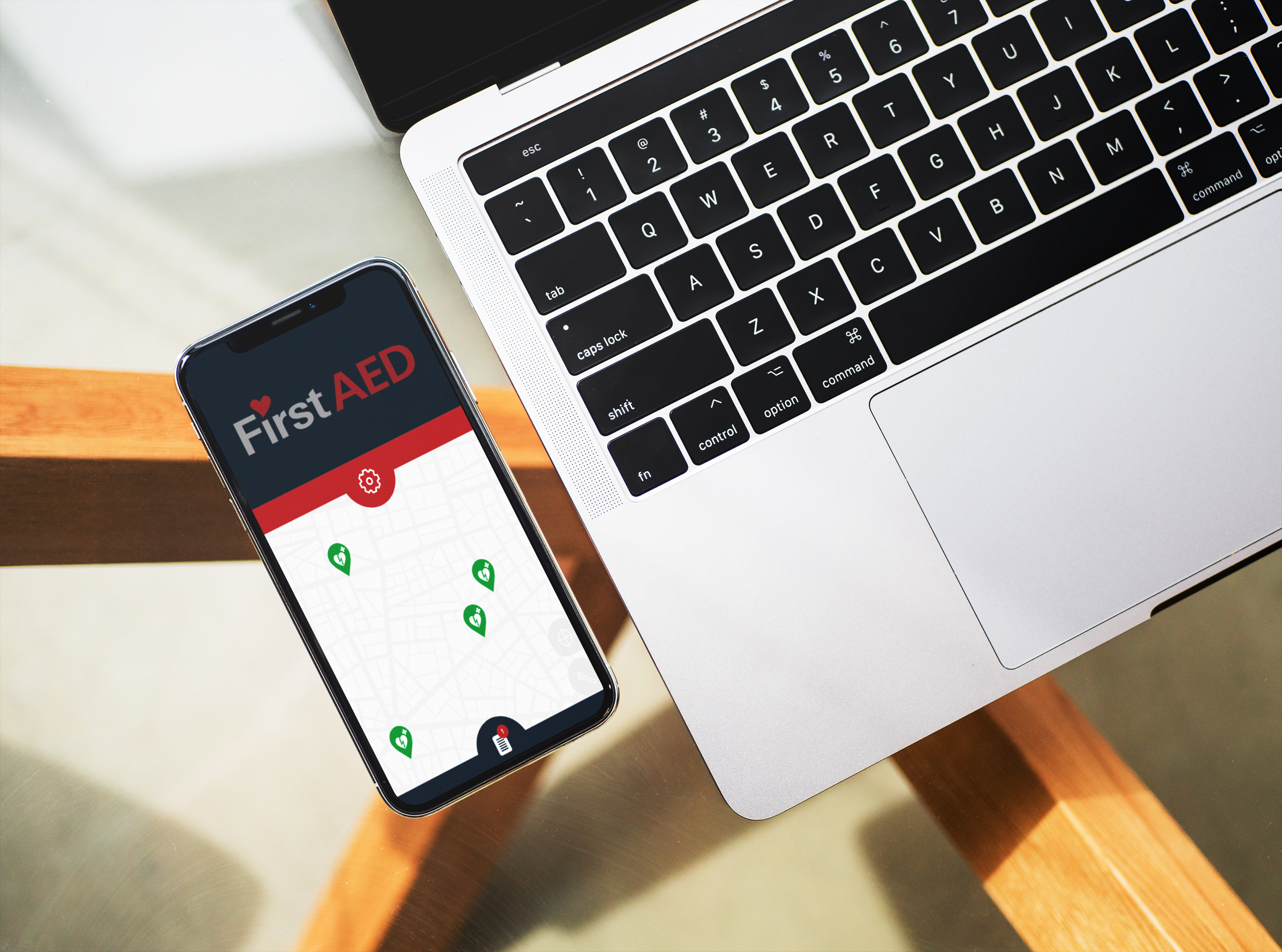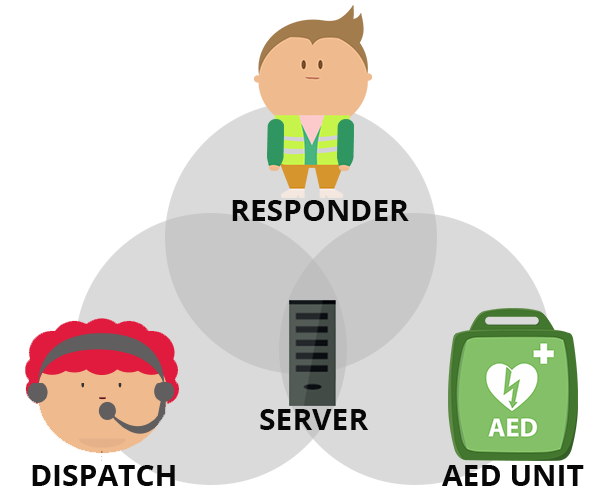Why FirstAED
why FirstAED
FirstAED has a smarter and more efficient solution for alerting and organizing Community First Responders and CPR trained bystanders.
We work with some of the most ambitious Emergency Medical Services worldwide to innovatively improve survival after cardiac arrest.
If you opt for FirstAED, then you will get a technologically leading system, based on a creative collaboration on new feature development based on practical application. At the same time, you get a scientifically proven system with 15+ international publications and presentations in respected journals and congresses.
Innovation saves lives!

Read here how our solution is used by the dispatch centres to efficiently organize the community, alert responders, and reduce response times for Community First Responders and CPR trained bystanders. Using FirstAED can help your region save lives in the case of out of hospital cardiac arrest and other emergencies.
Getting on-site within 5 minutes matters
Sudden Out-of-Hospital Cardiac Arrest (OHCA) is a major public health concern. The overall incidence of OHCA is reportedly 62 per 100,000 inhabitants /year, and the overall survival rate varies depending on region but is estimated around 10%. In other words, 90% do not survive. The most important factors affecting survival is how quickly CPR is initiated, and that an AED is used.
In the case of OHCA it is imperative that help arrives within 5 minutes, Danish and international research shows that a response time of less than 5 minutes in connection with OHCA can increase the chance of survival from the current level of 10% to 30%.
For every minute past the recommended 5 minutes the chance of surviving the OHCA and surviving with no permanent injury decreases drastically. If no CPR is performed, survival likelihood is reduced by 10% for every minute. If CPR is performed this is reduced to 3-4%, which expands the window of opportunity in which an AED can be used. Therefore, quickly starting CPR is vital in cases of cardiac arrest in order to avoid irreversible brain damage.
FirstAED can help you reduce the time to CPR, thus increasing survival after sudden cardiac death.
Alerting the first responders by current location
FirstAED is using the Community First Responders and CPR trained bystanders’ actual GPS location to alarm the nearest Community First Responders and CPR trained bystanders.
Most existing systems for alerting Community First Responders and CPR trained bystanders to an OHCA are in the form of old fashioned telephone and address lists, where they are listed with place of work and/or residence. This does not give the optimal efficiency if the volunteer is on holiday, across town on business, out for lunch etc. More often than not they will be too far away to help, and the next volunteer on the list has to be called, which means losing valuable seconds or even minutes.
Why not switch to a new and innovative technology, that alerts responders, collects acceptances of alarms and allocates roles in just 20 seconds? With FirstAED this is possible.

Team work and organization for optimum efficiency
Availability of automated external defibrillators (AEDs) decreases response times but only if members of the public are trained in the use of AEDS, and they can be called on-site effectively.
Instead of relying on the chance that one or more trained Community First Responders and CPR trained bystanders might be present in the case of OHCA, the FirstAED system is organizing the volunteer Community First Responders and CPR trained bystanders to a team with clear roles and instructions and thus reducing the response time.
Responder #1 goes on-site and performs chest compressions and ventilation. Responder #2 collects the nearest AED and goes on-site, while Responder #3 talks to the relates and signals the ambulance. An effective role division inspired by in-hospital emergency teams.
